First, the good.
The extra level to the Second Ring Road has turned out to be a surprisingly efficient piece of work, with its own anoetic beauty. The clean concrete lines of the pylons, and the fresh, unblemished blacktop contrast so well with the sagging moldy balconies of last century’s buildings. The grass beneath the BRT high speed bus lane is untrampled and naturally green; the new parks, curbs, and facades along the Ring Road are inroads of order and modernity.
And it works!
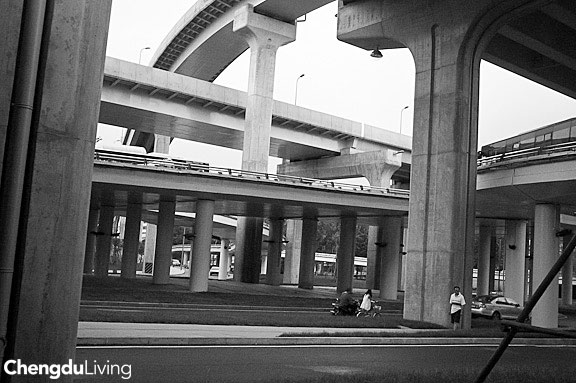
The bus lanes are free of joyriding black sedans and the trip on the bus from Hongpai Lou to Kehua Bei Lu, once a torturous half-hour to hour, now takes five minutes. With every Chen, Li and Wang racing to the upper deck to take advantage of no stoplights, the rest of us can dip between the many lanes of the ground-level Second Ring in peace, admiring the new Yong Feng Flyover gardens and stopping for a seat and a smoke somewhere past Dongmen.
Chengdu’s Global Center (Video)
Earlier this week, the New Century Global Center, the largest stand-alone building in the world, opened its doors to the public. I personally have an issue with “stand-alone” – it’s an asterisk placed there by haters. Like Jordan lovers scoffing at Lebron. Stand anywhere near the Global Center and consider yourself what exactly “stand-alone” qualifies. The building is spectacular. I have been inside, all around, and worked in an office close enough to turn around and watch the wings of the western corner rise up and be clothed in steel and light.

I admit to often feeling a dark foreboding, as if any moment the leaden sky above the center would crack open, unleashing a howling horde of demons, devils and dragons upon the city. But that hasn’t happened yet, and the other day as I rode past on one of the sunniest afternoons I have ever experienced in Chengdu, I joined white-gloved BMW chauffeurs and unwashed bread van drivers in a great gawk. It was the first time that everyone on the road was conscious enough of everyone else to dodge deftly while gawking. If that is all the Global Center ever inspires, then it is enough.
My friend Greg and I made a short documentary about the Global Center, The Second Ring Road improvements and construction in general. We also talk a little bit about the Tianfu New City, the Li Chuncheng corruption saga and some other topics as well. Check it out below:
While we were shooting footage for the documentary above, we also did a bit of timelapse with my friend Jia Maoyan, a local videographer. Below is a short of the Global Center at dusk:
Although the Fortune Global Forum came and went like the promise of a brisk cold wind in the middle of a stifling Chengdu afternoon, as a comment on “What Have You Done for Chengdu?” pointed out, it will be years before anyone can adequately judge the impact the forum had on Chengdu’s economy. Indeed, based upon the series of videos available to Fortune magazine subscribers, there is a lot going on behind the curtain that most of us won’t even guess at.
MNC’s in Chengdu
One of Fortune’s roundtable videos, “Technology, Innovation and The Emerging World” discusses how multi-national corporations are localizing their marketing and R&D operations, the logical follow-up to massive investments in manufacturing. We are seeing that in the Tianfu Software Park, and according to the panelists, global companies will push this trend ever further – designing, manufacturing, and selling in local markets like Chengdu and Sichuan.
“We will meet the aspirations of people to have a healthy life, access to good food, good education, but affordable,” said Frans van Houten, president and CEO of Royal Phillips Electronics NV. “So I am shifting the paradigm where I say, we have global business units that decides things globally to a market led innovation force, while leveraging global competencies, and therefore we go to a much more balanced way of innovation.”
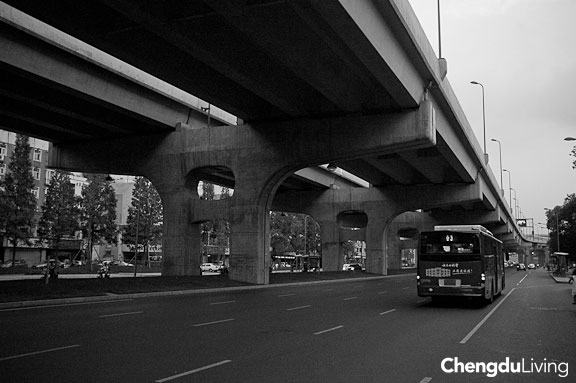
A recent article in Marketwatch briefly outlines Texas Instruments plans for Chengdu, which include billions of dollars toward manufacturing and testing:
“On June 7, 2013, Texas Instruments Inc. (TI) outlined its long-term strategy for manufacturing facilities in Chengdu, China. The Company’s future plans include a new assembly/test operation and the expansion of its existing wafer fabrication factory. TI reported that its investments in these operations could total up to $1.7 billion over the next 15 years and potentially include facilities, manufacturing equipment and land.
‘The Chengdu Hi-Tech Zone has been an excellent location for TI’s manufacturing investments in China. We believe this region offers significant benefits to TI and the more than 100,000 customers we serve,” said Kevin Ritchie, Senior Vice President of TI’s Technology & Manufacturing Group.'”
Just as the congestion and pollution that preceded a complete BRT system seem like distant (bad) memories, in a decade from now we may be speaking of Chengdu as a cosmopolitan, innovative hub and world-class market. The Forum may be that blip in our daily life that historians will point to as the pivotal event in Chengdu’s rise. The pieces are in place and, judging by the optimism dripping from the high-level CEOS who spoke at the Fortune Forum, the end will justify the means.
The Bad
The best place to begin is with a recent story in the WSJ about Chinese property developers’ new favorite city, Shanghai. Chengdu held this coveted position for two years in a row, but was knocked off this year.
“Chengdu fell to 7th in development prospects and 8th in investment prospects, as it faces an oversupply of offices, shopping malls and mixed-used complexes, especially in the central business district, survey respondents said.”
How big is Chengdu’s bubble?
The answer to this question depends on how you define bubble, says Eddie Ng, managing director of Jones Lang Lasalle’s Chengdu office. Certain sectors of the real estate industry are certainly facing a bubble, such as retail malls on the south side of the city, but others are actually looking at healthy growth, most notably office space downtown and around the Tianfu Software Park .
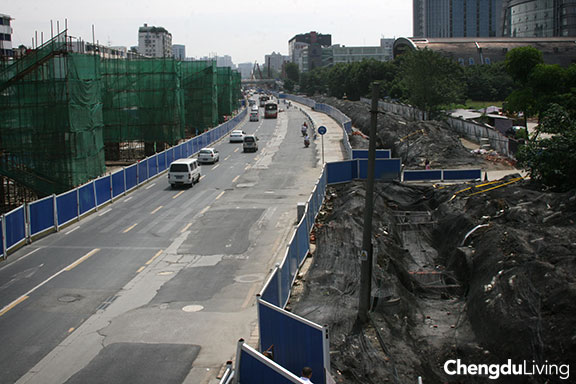
Supply & Demand in Chengdu
“There is a huge supply right now, but demand is also picking up,” said Ng. “It will take time for the city to digest the supply of office space, but it’s retail where I am more worried. There are a lot of inexperienced developers going into retail, especially in the south,” he added. “But I don’t see any developers closing up their offices.”
Precisely. In typical fashion, developers in Chengdu are building without giving much thought to whether or not the management companies they hand their projects over to will be able to make their money. Bank loans and government subsidies (one and the same?) cover the developer’s costs and profits, after which the city itself has to grow into the new capacity.
Last month I sat in the new Leanna’s on the second floor of the Suning Plaza and looked down upon a bustling Starbucks. The second floor was mostly unoccupied, but Leanna’s was huge and operational. I asked how much rent was, because I wanted to gauge the finances of the foreign founder – can’t help my hater instincts – and the waiter answered with a chuckle.
“Not much at all. It’s the management fee that really digs in.”
Turns out this is a common tactic to bring in tenants and earn a bit of cash. Low rents and high management fees with the promise of balance once the building fills out. Similar to the “key fee” renters charge each other for commercial property, high management fees are local adjustments to over-capacity and the overriding need to profit while the boom is booming.
The core obstacle to Chengdu becoming a world class market is … the market. Can the region urbanize quickly enough to fill the residential and commercial property shooting up like bamboo? Will enough farmers move to the city, buy iPhones and washing machines and put their kids through college? Will enough of those kids stay here and work in R&D and marketing?
Can wages rise quickly enough to create a middle class or will it be uber rich and ultra poor forever?
Actually, this sounds like a problem I would want to have and, at face value, nothing I would bet against. The middle class in Chengdu and across China is visibly growing, both in purchasing power and in social impact, and there is no stopping that movement in the short term.
The Coming Middle Class
The Second Ring Road BRT project and the Global Center were both built by farmers whose children are entering the middle class right now. Fan Qing, 52, has wrinkles in his face so deep you could hide a truck in them, especially when he smiles. He hauled scrap away from the Second Ring Road project for a year, making 3,000-4,000 yuan a month. He still has a home in Qionglai, more than an hour west of the city, but his daughter lives in Chengdu selling clothing and his grandson holds a Chengdu hukou and is going to kindergarten in the city.
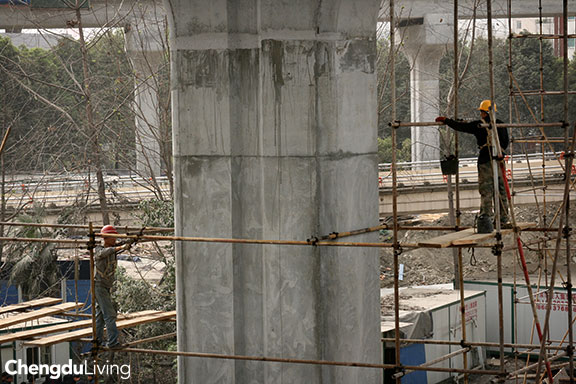
A couple from Yibin help weld beams onto the roof of the Global Center, while their daughter goes to grade school in Chengdu. Every dime they make goes toward her education, so she can grow up with fine fingers, pale skin, an education and the means to buy a home in the capital. Liao Yun Zhong, another leathery old face running a crane on the Yong Feng section of the BRT, is saving up for his grandson; a group of seven villagers laying down glass panes on the bubble in the middle of the Global Center want to buy an apartment together in Chengdu. Near the center, underneath a phalanx of half-built skyscrapers, a family of four: daddy welds, momma serves up lunch outside the worksite, son sells smokes out of the back of an aunt’s breadbox van. Thousands more like them are building this city up from the ground and it is up to their children to fill that space.
They want to live in Chengdu. They want iPhones and apartments and Volvos and everyone from the CEOs at the Forum talking about emerging markets to the government officials selling land to developers is rooting for them to make it.
But unfortunately, a larger issue looms.
The Ugly
Chengdu’s bubble may be a calculated gamble by the city leadership – overcapacity now with the future middle class in mind – or it may be a massive grab for riches with little or no thought for what the city’s residents will end up with. We have covered the case of former Chengdu mayor Li Chuncheng on Chengdu Living, including his ties to Deng Hong, chairman of New Century Exhibition and Travel Group, the developer responsible for the Global Center and other projects.
Li Chuncheng had his fingers in so many pies that it is hard to determine if there is a project anywhere in Chengdu not tainted with some level of corruption. One by one, his associates have been brought in for questioning, including Jinjiang district police chief Wu Tao and former vice-governor of Sichuan province, Guo Yongxiang. These men have been linked to Zhou Yongkang, former Party secretary of Sichuan and now China’s “security tsar” – this article in Duowei includes a graphic showing how the web of embezzlement reaches to the very top.
Current Chengdu Party Secretary Huang Xin Chu is not connected to Li or Zhou, but has nonetheless moved forward with major projects connected to previous administrations, opening the Global Center last week and finishing the BRT late last month.
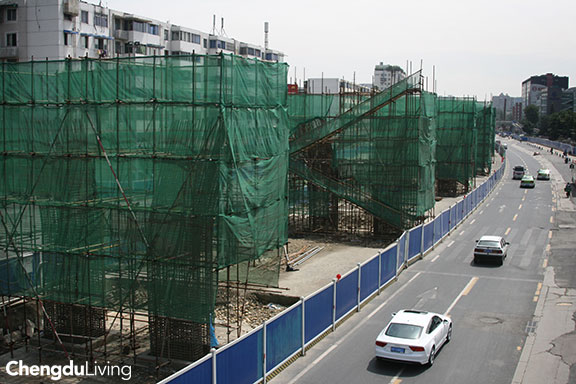
Huang has become a reviled figure on Sina Weibo and in the streets of Chengdu for pushing through dozens of construction projects all at once. The congestion and pollution caused by the construction of several Metro Lines and the BRT earned him the moniker Huang Wawa which means “Digger Huang” – much the way Li Chuncheng became a symbol of demolition and re-building 10 years ago.
He has ruthlessly censored the Internet, stamped out protests to the PX factory last month, and locked down the city during the Forum, but is he corrupt? With the bloated price tag for the BRT – 50 billion yuan according to television reports last month – and a dozen other projects underway, Chengdu residents find it hard to believe Huang and his associates are not making out like bandits.
But so far there are only rumors and no evidence. Perhaps a decade from now a strike hard campaign will find streaks of malfeasance in the concrete of the Metro lines, but by then the city will have already filled up the apartments and malls, or have long since drowned in debt.
You can’t keep building endless shopping malls, mostly devoid of shoppers. Went to the new Silver City yesterday. Deserted at mid-afternoon. A dark, dreary, empty rabbit warren….the girl in the new balance store didn’t even stir from her nap when I entered!
Innovation—the Philosopher’s stone of economic growth—cannot be planned. Chinese authorities can choreograph rural migrations and erect skyscrapers to prettify city skylines. But that won’t do. It takes something very different to create a lively, self-sustaining modern economy capable of intensive growth: steady property rights, unrestricted labor mobility, developed credit markets, provisions for intellectual property, and limits on bureaucratic interference—all missing in China. Only under such conditions can Hayek’s economic calculation problem be solved, entrepreneurship thrive, and decentralized knowledge direct economic activity. But when all you have is a hammer, everything looks like a nail. So instead of setting the economy free, Chinese central planners continue to experiment with mercantilist schemes and boondoggles of fiscal largess because these are the only tools at their disposal.
First of all, thank you Sascha for this nice piece of journalism. Amazing footage of the Global Center and very nice background information.
This is a very interesting comment Kejda. I tend to fully agree with you. However the conditions you mention to solve the Hayek’s economic calculation problem are not easy to establish in the short term. Especially because it’s culture that is mostly blocking the creation of these conditions. And it takes two or three generations to change culture, not just two or three decades. Will the economy hold itself together long enough? I’m definately not sure. But we are all in China working on change and at some point the effects must be felt.
Thanks again for your inspiring comment!
Thanks, I know little of Hayek’s calculation (reading now), but I will do what we do best, and put forth an educated guess based upon your two comments:
I see many more stabs at creativity – and countless more mentions of creativity – now than ever before. My wife and I were discussing it the other night, and my point was that the culture and society here (incl. edu) do not value or respect or even like the uncertainty that comes with creativity/innovation. The risks, the guesses, the failures … no one wants that in China actually.
Here, in order to do business, there must be a clear, almost ironclad kickback/payoff or nothing will be done. It must have already made someone money. The corner must have already been cut so many times, the method validated over and over, before anything will be done.
And I said that that was a function of society wide fear, reinforced by “Agents of Conformity” (http://www.saschamatuszak.com/agents-of-conformity/) …
My wife grew angry and said:
How dare you peer down at us from your faux height. You grew up where diffrerence, diversity, and choices are like grains of sand on a beach. Here, where most people live their entire lives without a single example of deviation from the norm, how could you possibly say it is fear that drives the lack of innovation and not pure experience?
I think we are missing each other by hairs. But it gives me a bit of hope that we as Westerners are just as much agents of positive growth as we may be carriers of an individualistic virus deadly to traditional culture.
tldr.
KGJ:
“steady property rights, unrestricted labor mobility, developed credit markets, provisions for intellectual property, and limits on bureaucratic interference”
Then how do explain the difference in innovation between HK which has all of the above and Shenzhen which has none of the above?
Shenzhen has Huawei, ZTE, Tencent, Gree, etc.
HK has Disneyland.
Nuff said.
“And Shenzen, in Guangdong province, has just surpassed Silicon Valley as the world’s most prolific cluster for international patent applications relating to information and communications technology. These are not patents filed by subsidiaries of US corporations either. Two Chinese firms based in Shenzen – Huawei and ZTE – have recently joined the top five companies globally across all industry sectors by annual volume of international patent applications.”
Read more:
http://www.theage.com.au/comment/how-chinas-knowhow-is-challenging-the-us-20131230-3032c.html#ixzz2pDuBXN9U
That’s beautiful prose about a “free economy”, so when does the US want to start such an enterprise? I have yet to see it actually do any of what you describe when it comes economic policy. What you describe is a myth corrupt central planners paint over their facade of free market, when we all know the truth behind their “special control features”.
Maybe this a dumb question, but what the heck are “fine fingers?”
A symbol of having been raised in the privileged class of China. Members of China’s lower rungs of society have leathery hands, worn from manual labor.
I see, thanks. I misinterpreted that to mean that thin fingers were some how valued.
This is is a fantastic article, and I think it’s a fair look at the prospect of Chengdu’s development. When you told me you were writing this I expected it to be a lot more skeptical of Chengdu’s development prospects. Immediately after the Forbes Forum left Chengdu there was a collective feeling that the Forum wasn’t the international spectacle that Chengdu had hyped it up to be. But perhaps, as you and others have said, it will just take years to really see the positive effects of the forum to take hold – lets hope the seeds are planted for more international corporations to setup operations in Chengdu and help guide the city further towards modernity.
The New Century Global Center looks incredible, you’re lucky to have been inside it during construction and to have photos and personal accounts to tell the story. I really wonder how we’ll look back on that particular project in a few years. In the lead up to the forum I was in touch with a NY Times columnist who was here and met with local government, and he found it highly suspicious that no one seemed to reference the Global Center at all. “Why isn’t Chengdu touting the world’s largest building, which is right here?” he’d ask. At the time, the only solid theory was that the project was clouded in the controversy created by all the revelations of corruption that were revealed earlier this year, around Liu Chuncheng and De Hong. Fortunately, the Global Center might be emerging from that cloud.
Anyway, great piece! The time lapse and “Digger” Huang Youtube clip are very nice complements.
thanks everyone,
while i was doing the video (at the bottom of the story, hopefully not completely buried), most of the people I interviewed were very optimistic. People on the street, migrant workers, people buying up office space in the Global Center – everyone basically said the same thing:
yes, the pollution and corruption suck, but the city will make it and be awesome a decade from now.
I am not sure about awesome, but I think the naysayers are akin to those who said the real estate bubble would pop back in 2005, and are now wishing they would have bought then and sold now …
…and this is the mentality that underlies every bubble in human history.
tks for ur story abt Chengdu’s Global Center.
Hey, what happened to the article about the Chinese dream that Peter wrote? I remember reading it, but can’t seem to find it.
Hi Paul, it’s here: The China Dream, in English
Wonder if there is just belief that because big money is at stake in these construction projects that corruption has to fit into the mix. Surely, Chinese people will always have suspicion of this because of the amount of corruption that has previously happened.
any foreigners live in Chengdu and want to make friends here? My name is Jack and want to learn English well, also make friends from the world.
A very insightful understanding of the City. Even though this was written over a year ago, it’s still very relevant to how the city is booming today.
I’m from the U.S. and have been spending the summer working at the planning agency in Chengdu. I live in south Chengdu and development is happening at a faster rate than demand. It’s striking how many empty shopping centers with fake business banners and skeletal, under-construction high rise residential towers are present throughout the area.
The rate of economic growth and expansion is comparable to the U.S. 50 years ago, though Chengdu is densifying at a much higher rate. The lack of safety and driving enforcement, negligence of maintenance for all buildings in the future (which will mostly result in more demo/rebuilds than building preservation), and the fast rate of construction and absence of a clear, long-term planning vision will be issues the City will need to eventually face. Chengdu intends for its’ 4th ecological ring to act as a urban growth boundary, and satellite cities are being planned with unclear justification for their relationship to the central city of Chengdu. How Chengdu will expand outward in the future will be interesting.
The current governance does not allow for public participation, which is a key element (if not the most vital aspect) of city planning. In the U.S., we’ve made many planning mistakes in the past but are bouncing back with better participation approaches and human-scale development. In a far future, perhaps governance in China will realize that a bottom-up approach is needed to create more quality environments for its constituents.
There is such a focus on “showcasing” Chengdu and how the city can make its mark as a bustling, high-tech city. I see so many flaws in the development of the city, but Chengdu provides a unique “experimental” city to see if it can correct its mistakes by learning from other cities’ successes and pitfalls too.
Great points and questions. I wonder if local or regional districts in China might resemble Detroit in a few decades. We’ve experienced (and are still seeing) an unprecedented construction boom along with what appears to be a widespread lack of focus on longevity.
Last week I was in France and Germany and was struck by how old and well-preserved all the buildings are. Paris feels ancient, beautiful, and planned and maintained with such incredible care and consistency. New developments in China age horribly.
Take the Poly Center in Chengdu for example: construction completed less than two years ago, it’s filled with tenants already, and it looks incredibly dilapidated and worn down. Buildings in China are simply not built to last – how long can the economy continue to boom to support endless construction and maintenance? I can easily imagine a large portion of buildings in China eventually falling into total disrepair – like Detroit after its boom period passed and they realized they probably went a little too crazy.
Definitely some food for thought Charlie! The Poly Center is a prime example of how badly the buildings age in Chengdu.
Preservation seems like a difficult task here since new and old buildings are so poorly maintained as you’ve mentioned. For instance, several people I’ve talked to living in the historic 1-story courtyard-style homes in the central city are dissatisfied with their current living conditions. They want to live that middle-class life and much rather the government come in to buy them out. There’s no widely felt support for preservation in general, only as something the government believes it should consider.
Here in the planning agency, there is so much emphasis on turning Chengdu into an ecological city. But are they really thinking about how development will work for the market today while being adapting to different uses in the future? It seems as though “there is just too many people in China” is a common catchphrase to justify this rapid pace of development and why it will continue to happen into the future. It’s definitely is a real problem nonetheless. Only after Chengdu reaches it’s build-out capacity will it probably begin to consider how to fix the city through a more fine-grained approach.
Interesting hearing your perspective as someone from inside the planning agency.
In their defense, there isn’t much to preserve. Almost nothing in China is more than 60 years old due to the period of widespread demolition which preceded our present construction boom. I agree that there isn’t much support for preservation in China in general – not only of its buildings and architecture, but of the culture itself. Calligraphy, kung fu, and many of the ancient pillars of Chinese culture are fading from relevance.
I stumbled upon this article about China’s urban planning which discusses how China failed to listen to the advice of urban planners from the West and has fallen into some of the same traps: Why Haven’t China’s Cities Learned from America’s Mistakes?